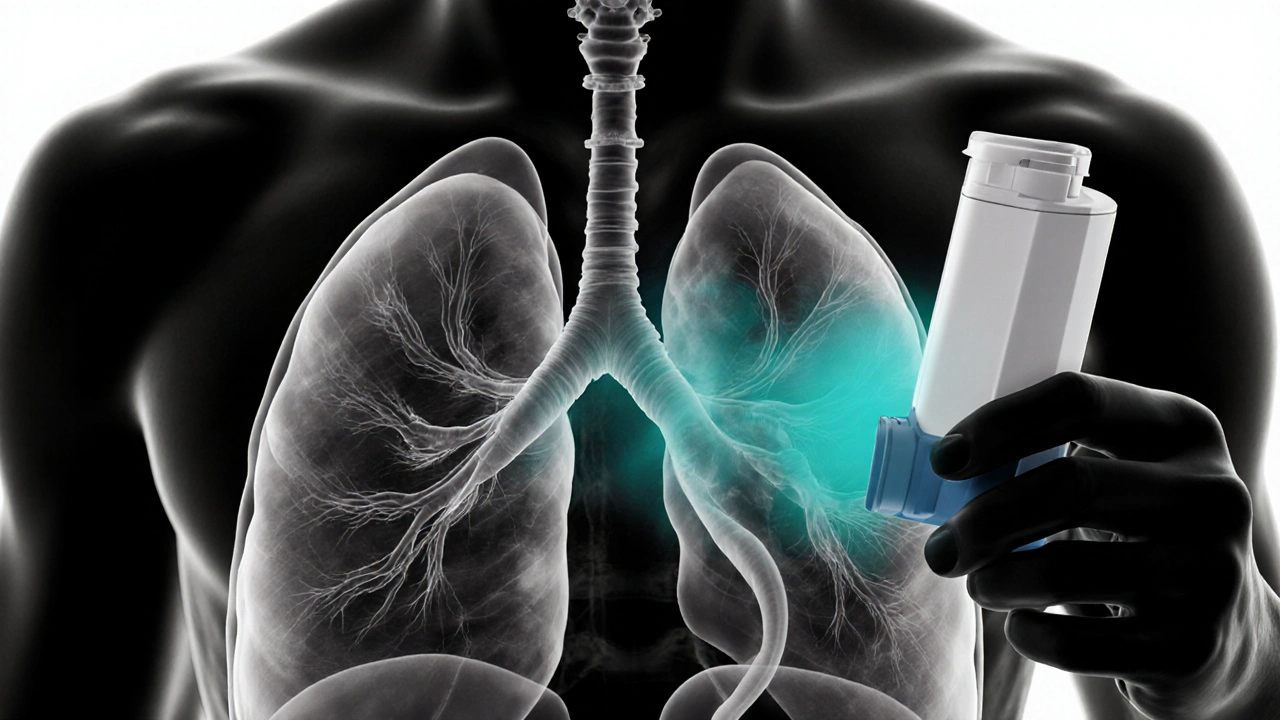COPD Treatment: What Works and Why
When working with COPD treatment, the set of medical and lifestyle actions used to control chronic obstructive pulmonary disease. Also known as chronic bronchitis and emphysema therapy, it aims to ease breathing, prevent flare‑ups, and keep daily life moving. A key part of any plan is inhaled bronchodilators, medicines that open the airways quickly, which most patients start using right after diagnosis.
Core Medications and Rehab Strategies
Beyond bronchodilators, inhaled corticosteroids, anti‑inflammatory drugs delivered straight to the lungs help cut down the swelling that fuels chronic cough and sputum production. When you pair these meds with pulmonary rehabilitation, a structured program of exercise, education, and breathing techniques, the benefits multiply: patients often report better stamina, fewer hospital visits, and a clearer sense of control. In practice, COPD treatment encompasses inhaled bronchodilators and corticosteroids, while pulmonary rehabilitation improves outcomes by training the respiratory muscles and teaching energy‑saving tricks.
Even the best drug combo falls short without tackling the root cause: smoking. Effective COPD treatment requires smoking cessation, because continued tobacco exposure undoes the gains of any medication. Programs that mix counseling, nicotine replacement, and sometimes prescription aids show the highest quit rates. When you add clean air environments and regular physical activity, the lungs recover enough to respond better to inhaled therapies. This chain—stopping smoking, using bronchodilators, adding steroids, and joining rehab—creates a feedback loop that slows disease progression.
Managing flare‑ups, or exacerbations, is another pillar of a solid plan. Quick‑action inhalers, oral steroids, and antibiotics can head off a worsening episode if started early. Vaccinations against flu and pneumonia also play a crucial role; they cut down the infections that often trigger severe attacks. Oxygen therapy, prescribed for those with low blood oxygen, supports daily tasks and improves sleep quality, linking directly back to better exercise tolerance in rehab.
All these pieces—medications, lifestyle changes, preventive care—form a comprehensive toolbox for anyone dealing with chronic airway obstruction. Below you’ll find a curated set of articles that break down each element, from how to pick the right inhaler to tips for staying smoke‑free and exercising safely. Dive in to get practical advice you can start using today, and see how each strategy fits into a full‑scale COPD treatment plan.
Beclomethasone for COPD: Managing Chronic Obstructive Pulmonary Disease
- Laura Ledas
- Sep, 30 2025
Explore how beclomethasone works for COPD, its clinical evidence, dosing tips, benefits, risks, and practical advice for patients and clinicians.
Learn More